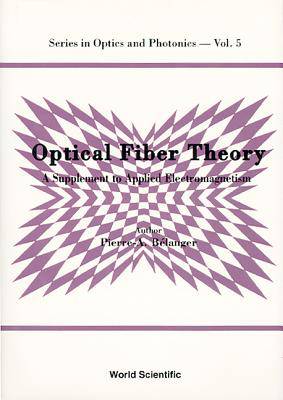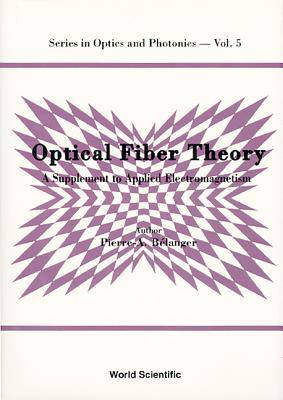
- Afhalen na 1 uur in een winkel met voorraad
- Gratis thuislevering in België vanaf € 30
- Ruim aanbod met 7 miljoen producten
- Afhalen na 1 uur in een winkel met voorraad
- Gratis thuislevering in België vanaf € 30
- Ruim aanbod met 7 miljoen producten
Zoeken
Optical Fiber Theory: A Supplement to Applied Electromagnetism
Pierre-Andre Belanger
€ 85,45
+ 170 punten
Omschrijving
This book describes the electromagnetic theory for the propagating modes of dielectric guides with the objective of understanding the applications of these guides to a telecommunication system. Every book on classical electromagnetism introduces the metallic waveguides as an example of application of the Maxwell equations with boundary conditions. A few books summarily describe the dielectric guides. Nevertheless, following the applications of these guides in the form of optical fibers, it has become essential for a course on applied electromagnetism to cover this theory and emphasize on the dispersion minimisation which allows an extreme bandwidth. The dispersionless "solitonic" solution is introduced to inform the reader on this new optical pulse shape which may soon ensure transoceanic communications. The study of the minimisation of the waveguide dispersion leads us, by means of several calculated frames, to the weakly-guiding condition. This essential condition for a large bandwidth fiber leads us to the introduction of the practical LP modes. In order to initiate the reader into integrated optics components, the electromagnetic solution for two coupled planar waveguides is treated in an appendix. Another appendix allows the reader to go through a quick initiation of the geometrical optics theory (essential for the study of graded-index fiber), being the iconal equation and the ray equation starting from Maxwell equation under the short wavelength approximation.
Specificaties
Betrokkenen
- Auteur(s):
- Uitgeverij:
Inhoud
- Aantal bladzijden:
- 244
- Taal:
- Engels
- Reeks:
- Reeksnummer:
- nr. 5
Eigenschappen
- Productcode (EAN):
- 9789810214913
- Verschijningsdatum:
- 1/12/1993
- Uitvoering:
- Hardcover
- Formaat:
- Genaaid
- Afmetingen:
- 162 mm x 216 mm
- Gewicht:
- 517 g

Alleen bij Standaard Boekhandel
+ 170 punten op je klantenkaart van Standaard Boekhandel
Beoordelingen
We publiceren alleen reviews die voldoen aan de voorwaarden voor reviews. Bekijk onze voorwaarden voor reviews.








